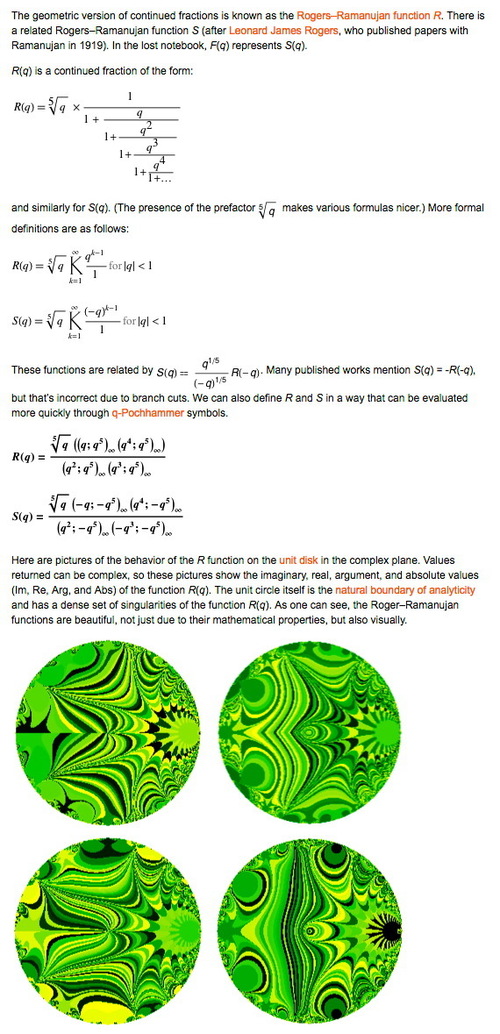After 100 Years, Ramanujan Gap Filled
See on Scoop.it - Pour notre culture
Who was Ramanujan?
A century ago, Srinivasa Ramanujan and G. H. Hardy started a famous correspondence about mathematics so amazing that Hardy described it as “scarcely possible to believe.” On May 1, 1913, Ramanujan was given a permanent position at the University of Cambridge. Five years and a day later, he became a Fellow of the Royal Society, then the most prestigious scientific group in the world. In 1919 Ramanujan was deathly ill while on a long ride back to India, from February 27 to March 13 on the steamship Nagoya. All he had was a pen and pad of paper (no Mathematica at that time), and he wanted to write down his equations before he died. He claimed to have solutions for a particular function, but only had time to write down a few before moving on to other areas of mathematics. He wrote the following incomplete equation with 14 others, only 3 of them solved.
Within months, he passed away, probably from hepatic amoebiasis. His final notebook was sent by the University of Madras to G. H. Hardy, who in turn gave it to mathematician G. N. Watson. When Watson died in 1965, the college chancellor found the notebook in his office while looking through papers scheduled to be incinerated. George Andrews rediscovered the notebook in 1976, and it was finally published in 1987. Bruce Berndt and Andrews wrote about Ramanujan’s Lost Notebook in a series of books (Part 1, Part 2, and Part 3). Berndt said, “The discovery of this ‘Lost Notebook’ caused roughly as much stir in the mathematical world as the discovery of Beethoven’s tenth symphony would cause in the musical world.”
In his book analyzing Ramanujan’s results, Berndt investigates the existence of a solution for many of Ramanujan’s equations. Now we know, sometimes a solution exists as elegant as other values found by Ramanujan himself.
See on blog.wolframalpha.com
